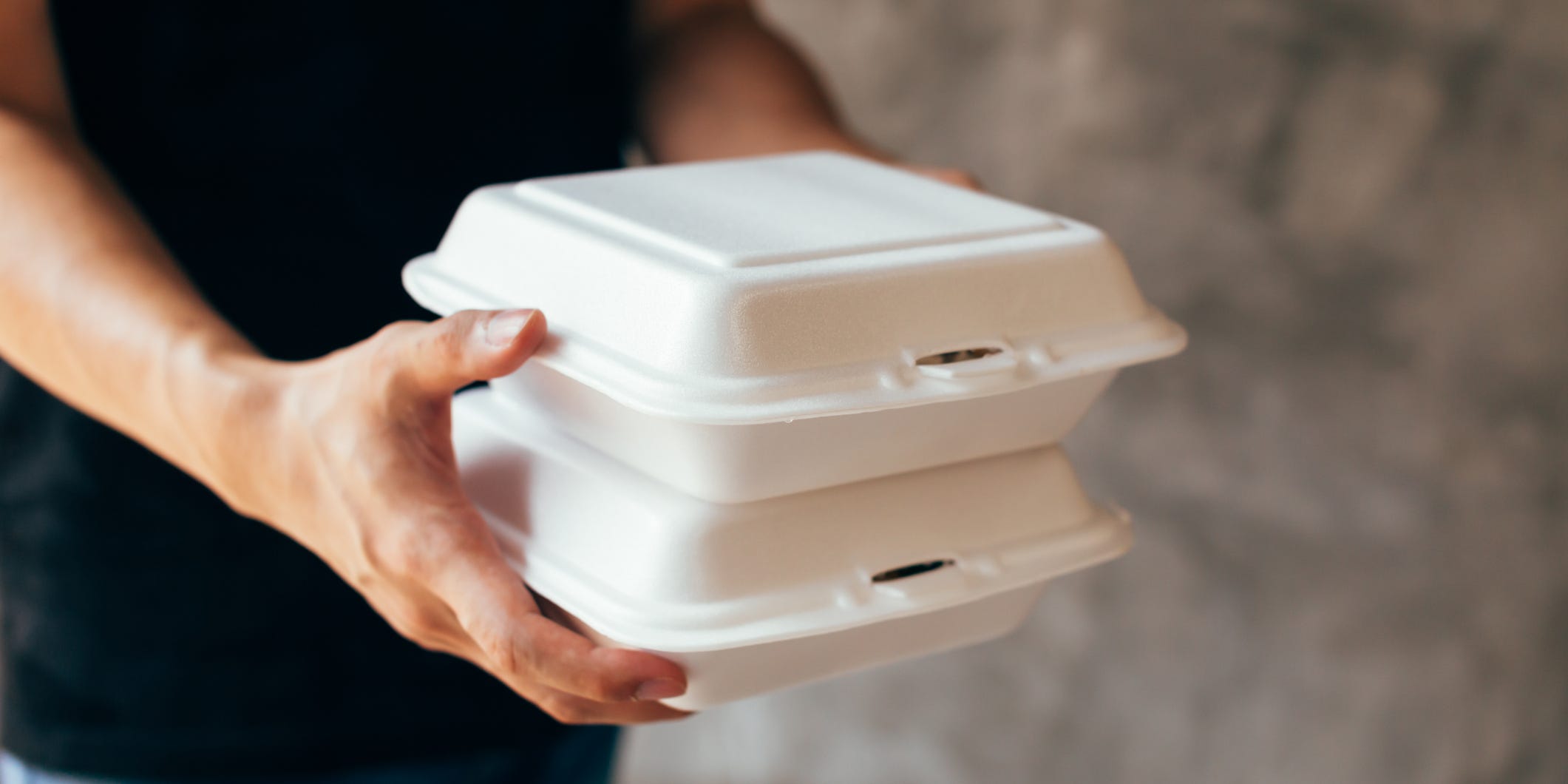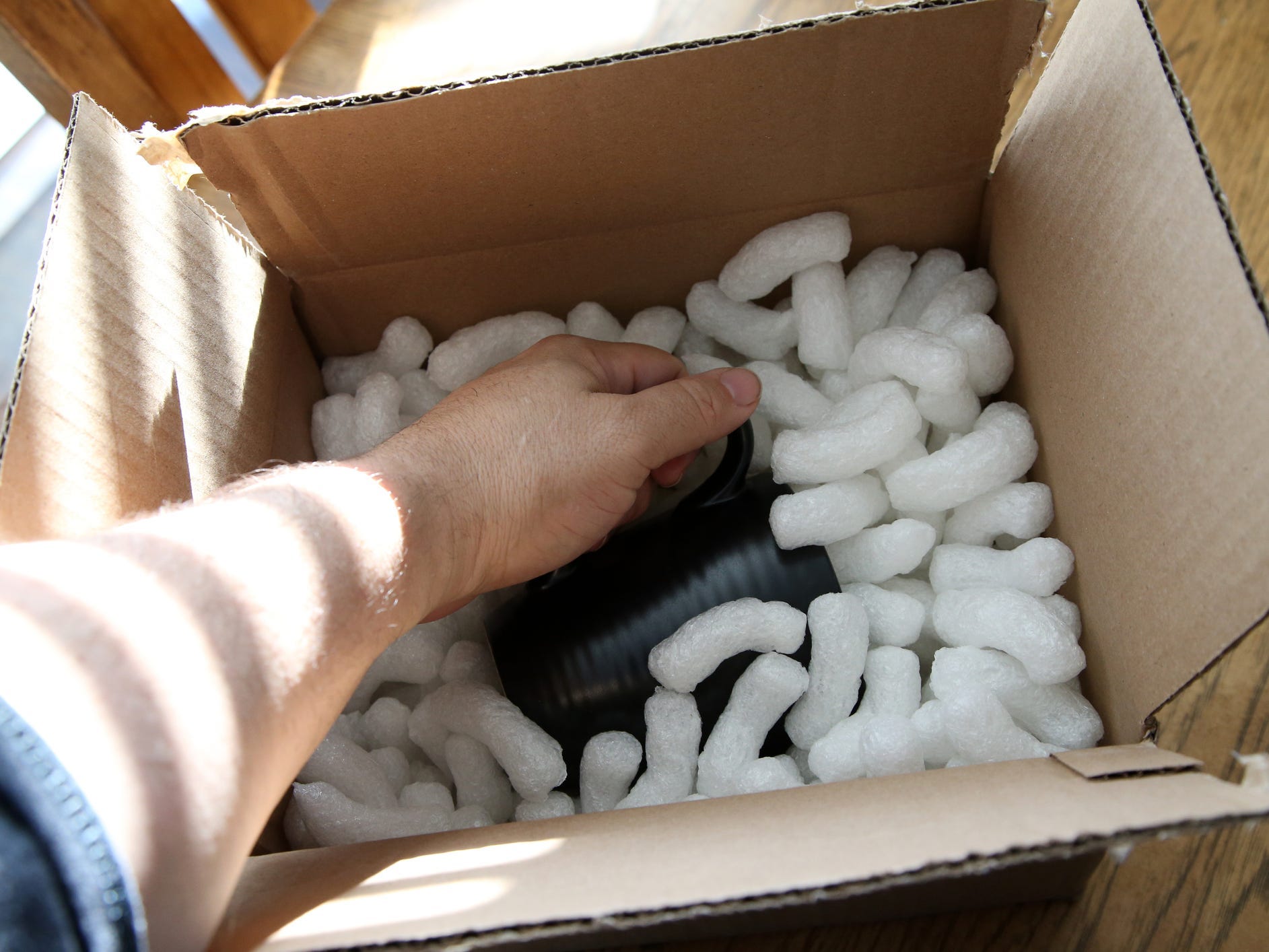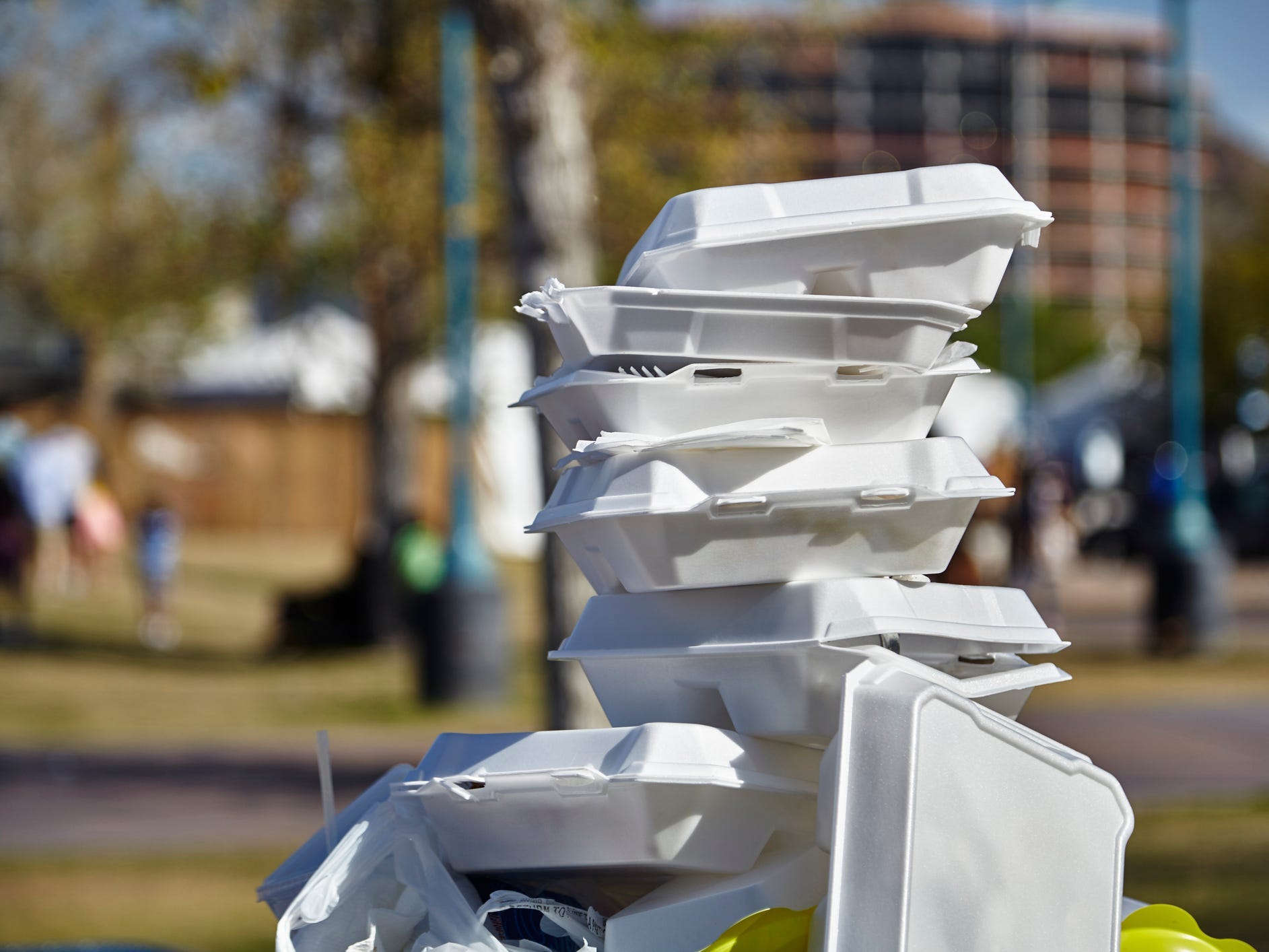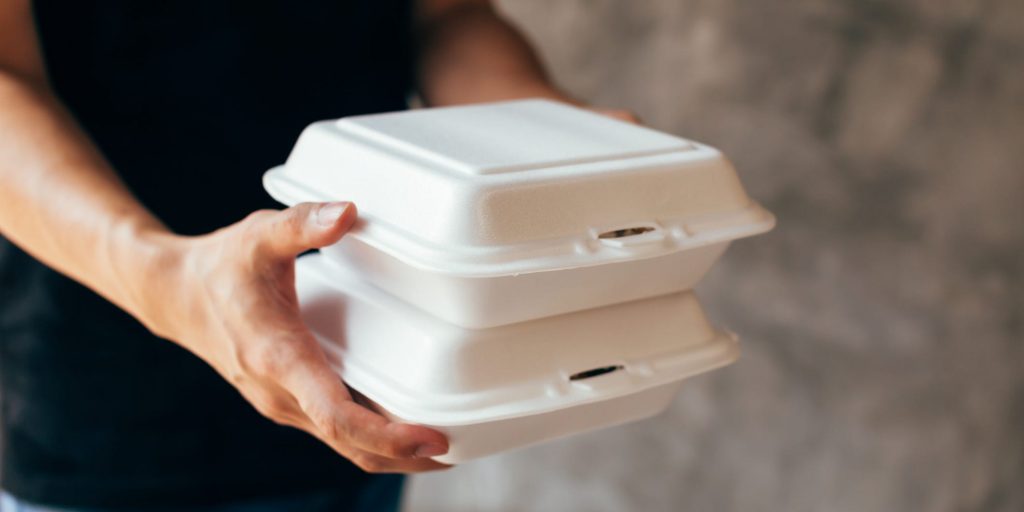
- Expanded polystyrene (EPS), commonly known as styrofoam, doesn't degrade or break down over time.
- Styrofoam is recyclable, but it is only accepted by a very small number of recycling facilities.
- The best solution for recycling styrofoam is to reduce usage.
- Visit Insider's Home & Kitchen Reference library for more stories.
You've seen styrofoam used for takeout containers and disposable coffee cups. And if you've ever received a package marked "fragile," it most likely contained styrofoam as protective padding.
While expanded polystyrene (EPS) foam — or styrofoam, as it's more commonly called — is just as ubiquitous as single-use plastics, it's more harmful than you may think.
Even though it's not biodegradable, EPS can still be recycled. But unfortunately, doing so is not as easy as throwing it into the nearest blue recycle bin. Here's what you need to know.
Is EPS recyclable?
EPS is recyclable, but because it is lightweight, bulky, and difficult to clean due to its porous nature and common usage in food packaging, it's a costly material to recycle at an efficient scale, like programs for glass or cardboard.
Most curbside recycling programs don't accept EPS materials, or don't have the capability to recycle them.
Because of these challenges, approximately 2.3 million tons of EPS end up in landfills every year worldwide, according to Rick Perez, founder of Avanguard Innovative, a large scale waste and recycling optimization company.
When EPS takes up space in landfills, it becomes an even bigger waste management concern. By many accounts, it can take up to 500 years for EPS to decompose, and because it is essentially non-biodegradable waste, it can also leach chemicals into the surrounding environment.
Options for recycling EPS

Most municipal sorting facilities don't have the capability to sort out EPS, so it's best to keep it out of your recycling bin.
Some centers may send any EPS to a landfill because it's too expensive to process. Worst case scenario? Facilities are "unable to separate [EPS], and it pollutes the recycling stream, preventing other materials from being recycled effectively," says Imogen Parker, a consumer and manufacturing expert who is part of the sustainability team at PA Consulting. Ideally, EPS should be dropped off at a facility that accepts it.
You can find out if there's one in your area by checking your city's website or contacting your local municipal waste office. Perez also recommends Foam Facts as a reliable resource to help you find a recycling center that takes items like used takeout containers, cups, and packaging leftovers.
How to cut down on EPS usage

Perhaps the best solution for the EPS recycling problem is avoiding it altogether. It's important to keep in mind that styrene — a primary building block of EPS — is considered a health threat to humans by the US Environmental Protection Agency and a "probable carcinogen" by the World Health Organization's International Agency for Research on Cancer.
"The manufacturing process produces lots of pollutants including ground-level ozone and other toxic waste," says Parker.
Here are some tips for reducing EPS usage, according to Parker:
- Bring reusable cups and containers from home.
- Choose reduced packaging options when ordering online.
- Buy from brands that use biodegradable packaging.
- Reuse styrofoam for packing up boxes when mailing items or moving.
- Opt for corn-based packing materials if you need to ship something.
Insider's takeaway
EPS, also known as styrofoam, is a type of plastic that is commonly used for products such as cups, containers, protective wrapping, and packing peanuts. Because of its material, it takes a long time to decompose in landfills. It's difficult to recycle, but some recycling centers can process the material. Finding ways to repurpose expanded polystyrene products or making a point of using reusable containers are ways to cut down on polystyrene use.
